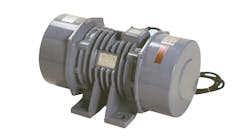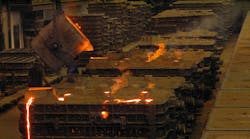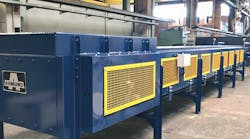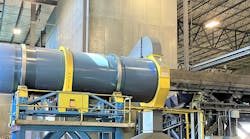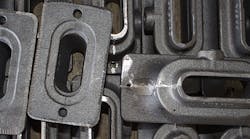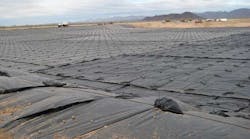A Massachusetts environmental engineering firm is earning attention for a new application for unrecyclable silica sands — the material that has exceeded its usefulness for casting molds but remains the responsibility of the operators to dispose of properly. The obvious solution, landfilling it, carries costs, so the availability of other options (e.g., road foundations, soil enrichment agents) means more flexibility
for the foundry holding the sand bag.
TRC Companies, a Lowell, MA, engineering, consulting and construction management firm has earned a National Recognition Award from the American Council of Engineering Companies for its effort to demonstrate the effectiveness of using spent sand from iron casting foundries as a landfill liner.
Working with Wisconsin Foundry Inc. to reduce landfill costs and reuse foundry byproducts, TRC determined that properly hydrated and compacted, bentonite-laden sands can be used safely and effectively as a low water permeability barrier product.
Wisconsin Foundry owns and operates a non-hazardous waste disposal facility in Waupaca, Wis., that receives spent sand from three green-sand foundries in the region producing gray and ductile iron castings. The sands contain silica, trace metallic elements, and bentonite clay, and customarily had been sent to the non-hazardous landfill.
TRC and WFI constructed test pads using the sand byproduct as landfill liner material. Their demonstration of how to effectively use the spent sand as a barrier in the landfill liner system was approved by the Wisconsin Department of Natural Resources in May 2014
TRC explained that the reuse of the sand byproduct reduces WFI’s landfill waste deposits by 80,000 cubic yards. Also, the design of the landfill liner using the byproduct reduces liner requirements from four feet of clay to two feet of sand byproduct material, overlaid by a geomembrane.
“The unique part of this is it’s a foundry sand that’s classified as ‘clayey’ sand and ‘silty’ sand material using the Unified Soil Classification System,” stated Doug Genthe, P.E., managing principal at TRC. “Once we understood the properties of the byproduct material, we realized that the material could be used as a barrier layer similar to a clay liner.”
According to Genthe, TRC is prepared to install the first byproduct liner outside of the test pads.
Bryant Esch, CHMM, environmental coordinator for WFI, foundries’ spent sands are about 10-15% bentonite clay by composition, which has been demonstrated useful in other ways. This application will be notably advantageous to WFI because using the material as a liner also will reduce the cost of new clay material purchased from other sources to contain its landfill.

